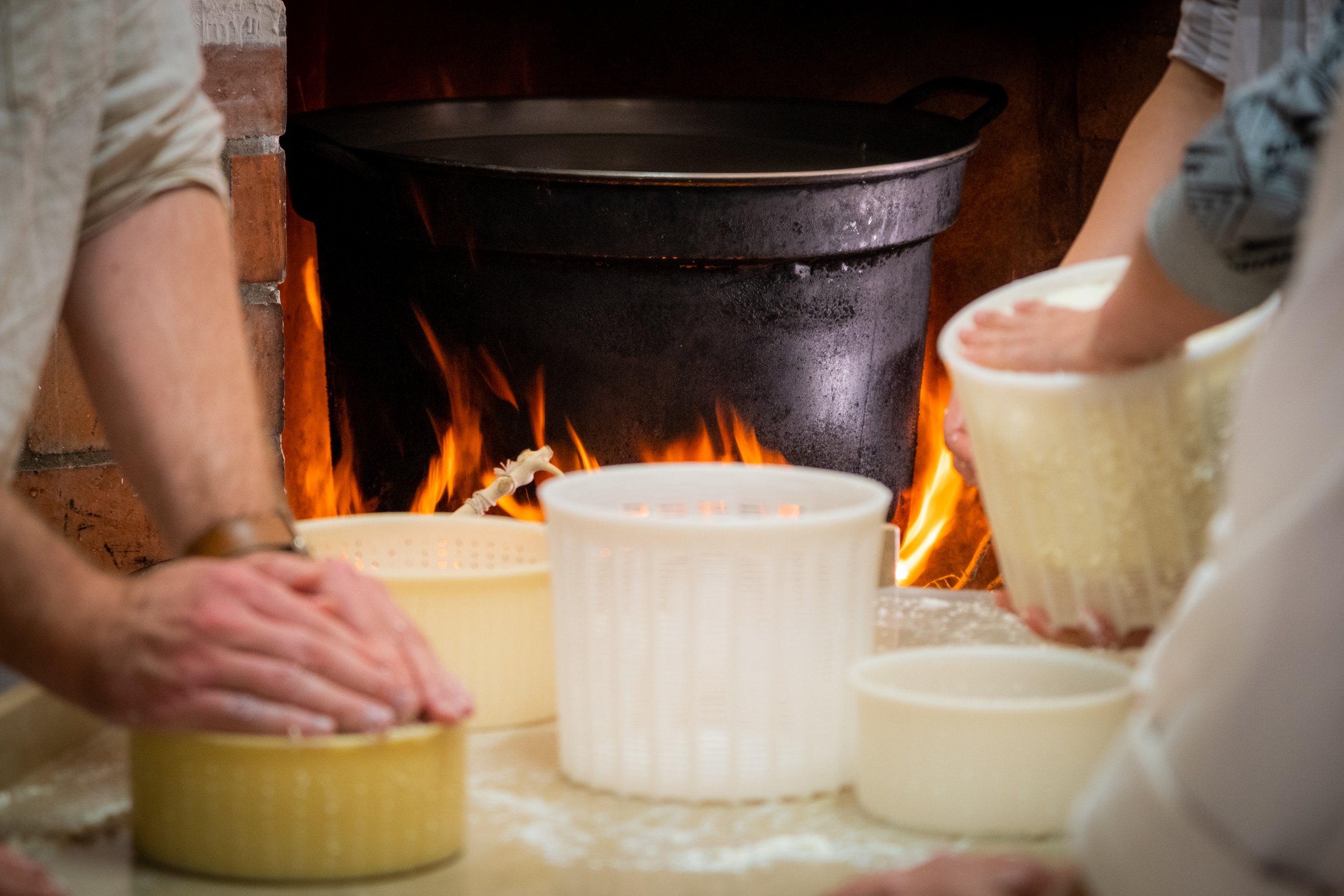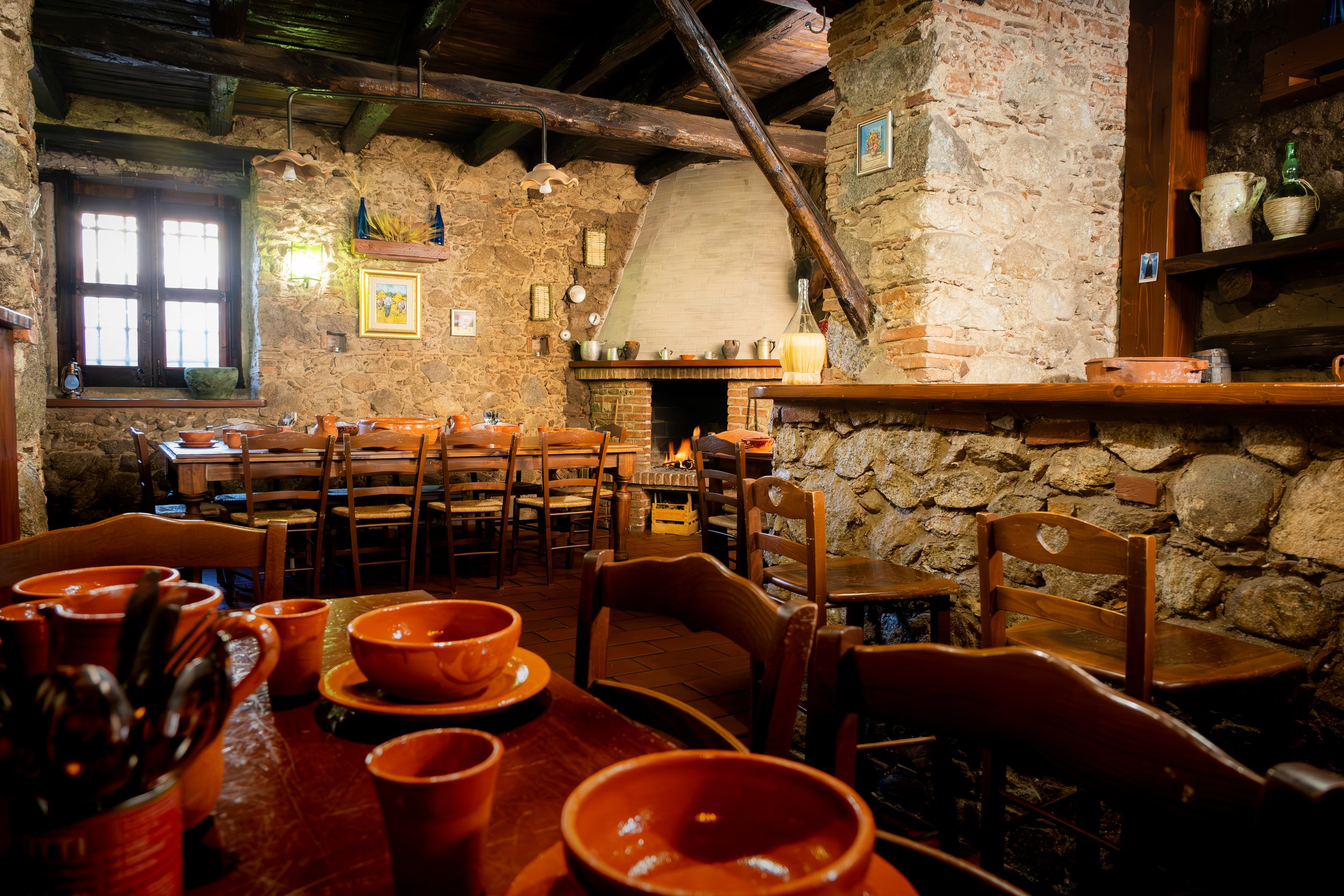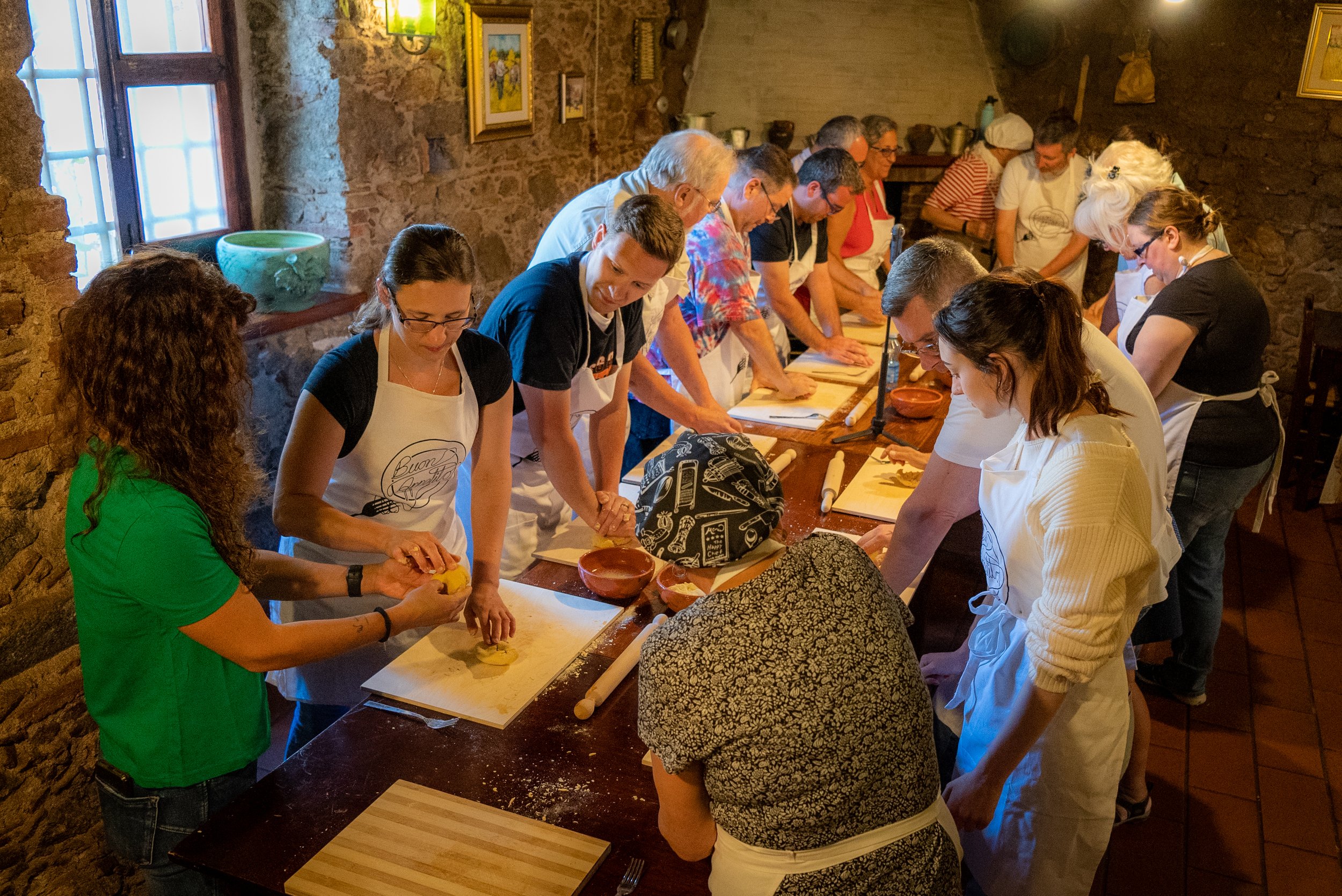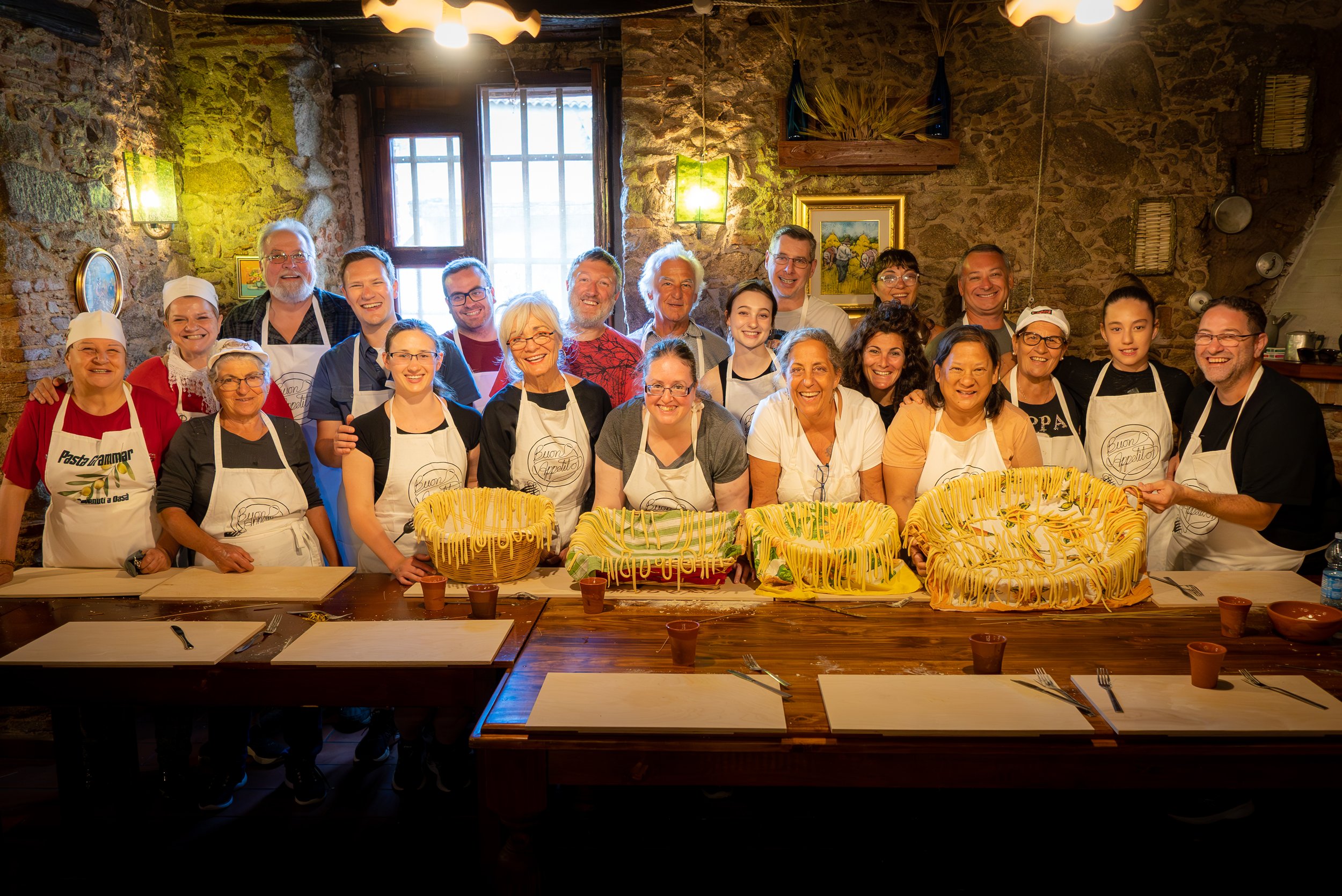Pasta Grammar—A Love Story Celebrating Food & Culture
When Harper texted Eva telling her to bring two forks to the car, her first outing to see the sights in Maine was about to take a fateful turn. Once she got inside, he surprised her with her very first piece of blueberry pie. For Eva, “La frittata era fatta.” A done deal in English.
The power of pie.
What followed was a year of multiple trips to the U.S. and Italy. Harper, a self-confessed ancient Rome history buff, remembers casually mentioning to Eva how much he wanted to visit the Rubicon River in Romagna where Julius Caesar crossed on his march against Rome. Fast-forward a few months later and one rather cold day in January, “We went to Ravenna and she went into several bars asking where to find this river until she found out and then took me there,” enthuses Harper. “It was one of the nicest things anyone ever did for me.”
One year later, the long-distance relationship came to a happy end; they got married in Eva’s native Calabria. With both his American side of the family and her Italian family in attendance, the actual name ‘Pasta Grammar’ came to Harper’s mind on the day of their wedding. “The discussion of whether meatballs belong on spaghetti erupted, and I watched Eva patiently explaining the rules of pasta to everyone at the table.”
An Italian language teacher with her own school in Orvieto for 10 years called I Love IT, Harper observed Eva’s natural inclination to teach in action and thought: Food is a language, it has grammar and a structure, hence Pasta Grammar. “Plus, it would make a cool name for a cookbook.”
The dormant idea resurfaced a few months later when they were visiting Harper’s mom in Maine from Los Angeles. “Covid hit, and we needed something to do. I come from a film-making background, so I knew how to make videos and she knew how to cook.”
The early videos consisted of Harper subjecting Eva to American food or an American interpretation of Italian food. She would grimace and give her perspective as an Italian, (think the chef, Primo, in the ‘90s film, Big Night) and then demonstrate how the dish is prepared in Italy. “Over time, my interest in giving Eva disgusting food diminished as I became more interested in her showing me good food,” says Harper.
In the early Pasta Grammar videos, Harper would have Eva sample American food and her reactions are priceless.
While Eva is well-versed in preparing Calabrese dishes, her culinary prowess extends to every region in Italy. Not formally trained, her knowledge comes from a place of pure passion. “I like to travel a lot and I would always choose my destinations based on the food I wanted to try,” recounts Eva. “Let’s go to Milano; I want to try risotto alla Milanese. Let’s go to Venice because I want to try cicchetti.”
Six months into the pandemic and video making, the fun Pasta Grammar YouTube pastime gained traction with a major spike in followers and comments from viewers. And there’s been no turning back. In 2021, they took the channel to the next level by organizing curated Pasta Grammar food tours of southern Italy from Naples to Sicily. “We really pride ourselves on creating a tour that goes off the beaten track. We do the type of stuff that Eva introduced me to when we started travelling Italy together,” says Harper.
La Zizzona di Battipaglia Buffalo Mozzarella is a specialty in the province of Salerno
Local habits like a stop in Battipaglia in the province of Salerno to buy the Zizzona di Battipaglia buffalo mozzarella as you make your way down to Calabria. Whether you’re in the picturesque hillside town of Morano Calabro or in an Albanian village, the emphasis is on highlighting local life with the group learning how to make regional dishes like handmade Calabrian fileja pasta, or Dromsa, a pasta originating from the Arbresche people in Civita.
Just this past year, they purchased a trattoria called La Locanda in Eva’s hometown Dasà in the province of Vibo Valentia to host their tour groups and cooking classes as well as add a new itinerary to the Pasta Grammar roster. “The whole week takes place in Dasà, except for the cheese when we go into the mountains,” says Harper. The week centres more on life in the village. “What lacks from any tour, is the experience of living in a town. You cannot experience that if you’re on a bus,” points out Harper. These tours are somewhat based on his early experiences in the village, and he wanted to bring that incredible local feel to their tours.
Eva’s hometown Dasa’ is located in the Vibo Valentia province in Calabria
They have certainly tapped into something with tour groups filling up consistently and repeat guests returning every year. The satisfaction and pride of introducing this way of life to travellers as well as generating interest and economy for Dasà is immeasurable for this foodie couple. With their help, a cultural non-profit in the town now offers a variety of year-round food experiences. It recently hosted a group of 31 Australians. “People come here and learn about pasta and goat cheese when we aren’t even here!”




With a Pasta Grammar Cookbook that will be published next fall, yet another one of Harper’s musings on their wedding day will soon become a reality. In the meanwhile, this dynamic duo has a lot of irons in the fire, “We have a lot of plans going forward to help this community. It will take time but it is coming together.” Coined by the Dasaesi to be the first American to visit Dasà since the Second World War, this town of 1,200 people is getting used to welcoming foreigners with their genuine warmth and signature hospitality all the while sharing their long-held food traditions with whoever visits.
The regional specialty that depicts Dasà in a dish? “Curijcchi, detto cullurielli in Cosentino,” declares Eva. In English, they are best described as a potato donut. “It is the food of happiness.” For Harper, his favourite local dish is pipi e patati. “It is the perfect dish that encapsulates calabrese food; it is strong, it is spicy, it is flavourful, it is ridiculously simple.” “And a ton of olive oil,” adds Eva.
Both extol the merits of fried Calabrian goodness. Buon Appetito!
Eva and Harper in Calabria eating curujicchi. If you’re from Cosenza, we call them: cururielli. Potato Donuts usually made the night of the Immacolata on December 8th every year.
Watch Eva and Harper on their YouTube channel here: Pasta Grammar
For recipes or information on their tours, go to the Pasta Grammar website
PHOTOS COURTESY OF PASTA GRAMMAR




